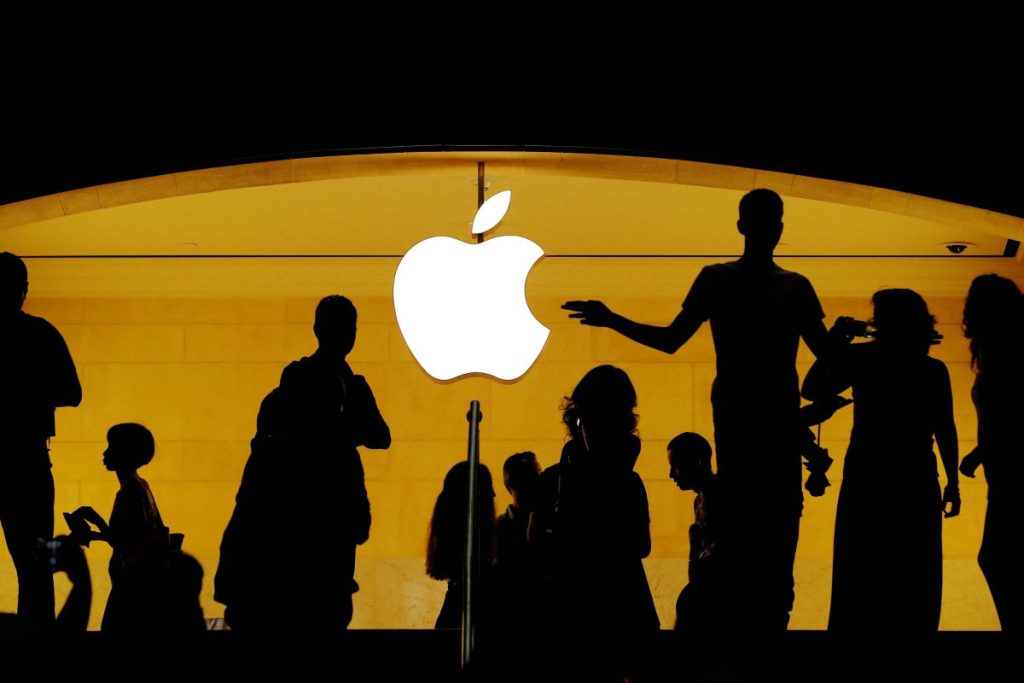 Credit: Reuters
Credit: Reuters SAN FRANCISCO (Reuters) -Apple on Thursday trimmed its share buyback program by $10 billion, with CEO Tim Cook telling analysts that tariffs could add about $900 million in costs this quarter as the iPhone maker shifts its vast supply chain to minimize the impact of President Donald Trump’s trade war.
Cook also said Apple’s planned $500 billion in spending to expand its U.S. footprint would involve both capital outlays and increased operational expenses as it builds out server and chip factories with its manufacturing partners. In addition, he outlined how Apple has started to build up a stockpile of products so that the majority of its devices sold in the U.S. this quarter will not come from China.
Taken together, analysts said the moves showed one of the most profitable companies in the history of business battening its hatches as it moves into uncharted waters.
“We were expecting to see more buybacks. Knowing the company, this indicates that Tim Cook is hoarding cash for difficult times,” said Thomas Monteiro, senior analyst at Investing.com. “While that’s not exactly a problem in itself, it certainly suggests that the company is not as certain about its near-term future as it was in previous quarters.”
Apple shares were down 4.3% after the company released quarterly results.
So far, the trade war has not been a problem for Apple’s sales, with Cook saying the company did not see consumers rushing to stock up on Apple items.
The Cupertino, California-based company said sales and profit for the fiscal second quarter ended March 29 were $95.36 billion and $1.65 per share, respectively, compared with analyst estimates of $94.68 billion and $1.63 per share, according to LSEG data. Sales of iPhones were $46.84 billion, compared with estimates of $46.17 billion, according to LSEG data.
For the current fiscal third quarter, Apple executives said the company expects low-to-mid single-digit revenue growth, which is in line with analyst expectations of 4.28% growth to $89.45 billion, according to LSEG data.
But Apple predicted a hit to gross margins, which it said will be 45.5% to 46.5% in its fiscal third quarter, which is below analyst estimates of 46.58%, according to LSEG data.
Cook said that for the quarter ending in June, “assuming the current global tariff rates, policies and applications do not change for the balance of the quarter and no new tariffs are added, we estimate the impact to add $900 million to our cost.”.
He said the majority of iPhones sold in the U.S. in the current quarter will come from India, and that most iPads, Macs and Apple Watches will come from Vietnam. Cook said that the vast majority of Apple products for markets outside the U.S. will continue to come from China.
“We have a complex supply chain. There’s always risk in the supply chain,” he said. “What we learned some time ago was that having everything in one location had too much risk with it.”
Cook also signalled that Apple’s efforts to spend more in the U.S. will come with real costs to Apple’s balance sheet. He said the company already sources 19 billion chips from a dozen U.S. states and will be expanding its own facilities.
“As we expand facilities in the different states – from Michigan to Texas to California and Arizona and Nevada and Iowa and Oregon and North Carolina and Washington – there will be (capital expenditures) involved in that,” Cook said.
For Apple’s second quarter, sales in its services business were $26.65 billion, compared with estimates of $26.69 billion, according to LSEG data. Apple said sales in its Greater China segment fell to $16 billion, better than analyst expectations of $15.9 billion, according to data from Visible Alpha.
In Apple’s accessories and wearables segment, which includes products such as AirPods, revenue was $7.52 billion, compared with estimates of $7.85 billion, according to LSEG.
Sales of iPads and Macs were $6.40 billion and $7.95 billion, respectively, compared with analyst expectations of $6.07 billion and $7.92 billion. Cook said that entry-level iPads performed the best during the quarter.
Apple also said it will increase its cash dividend by 4% to 26 cents per share and that its board has authorized an additional $100 billion for its stock buyback program, down $10 billion from the same time last year.
Inside Telecom provides you with an extensive list of content covering all aspects of the Tech industry. Keep an eye on our News section to stay informed and updated with our daily articles.